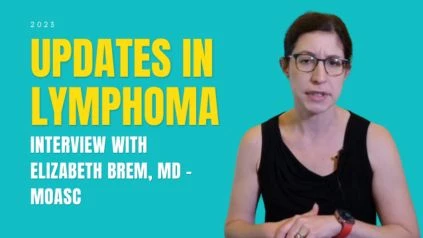Elizabeth Brem , MD discusses the design and outcomes of the study referred to as 1826. The study aimed to enhance outcomes and address toxicities in Hodgkin lymphoma treatment. Nivolumab’s potential benefits in comparison to brentuximab within the AVD backbone were explored. Additionally, Brem highlights the collaborative nature of the study, involving adult and pediatric cooperative groups, Canadian cooperative groups, and the children’s oncology group. This collaboration played a pivotal role in the trial’s success, enabling rapid accrual and earlier achievement of primary endpoints.
Elizabeth Brem emphasizes that the study achieved its primary objective by improving progression-free survival in patients with Hodgkin lymphoma. While overall survival benefits weren’t immediately evident, Brem underscores the impressive achievement of curbing toxicity. The study demonstrates that the nivolumab ABD regimen offers greater tolerability compared to brentuximab AVD, addressing concerns about neuropathy and neutropenia.
Addressing Hodgkin’s disease’s unique nature and the positive outcomes seen, Brem stresses the importance of mitigating toxicity, especially given the younger age of the patients. She emphasizes that sparing patients long-term toxicity, particularly peripheral neuropathy, is significant. Brem also highlights the lack of significant autoimmune toxicity in the nivolumab AVD arm, possibly due to the combination with chemotherapy and the limited treatment duration.
In terms of durability, Brem acknowledges the conventional focus on improved PFS and emphasizes how the study’s findings in the context of malignant hematology might differ from solid tumor cases. She considers the costs associated with both regimens but suggests that the toxicity profile of nivolumab AVD is a compelling reason to adopt it. The question remains about the long-term sustainability of the benefits, and Brem anticipates the need for extended patient follow-up to validate the sustained PFS improvement.

